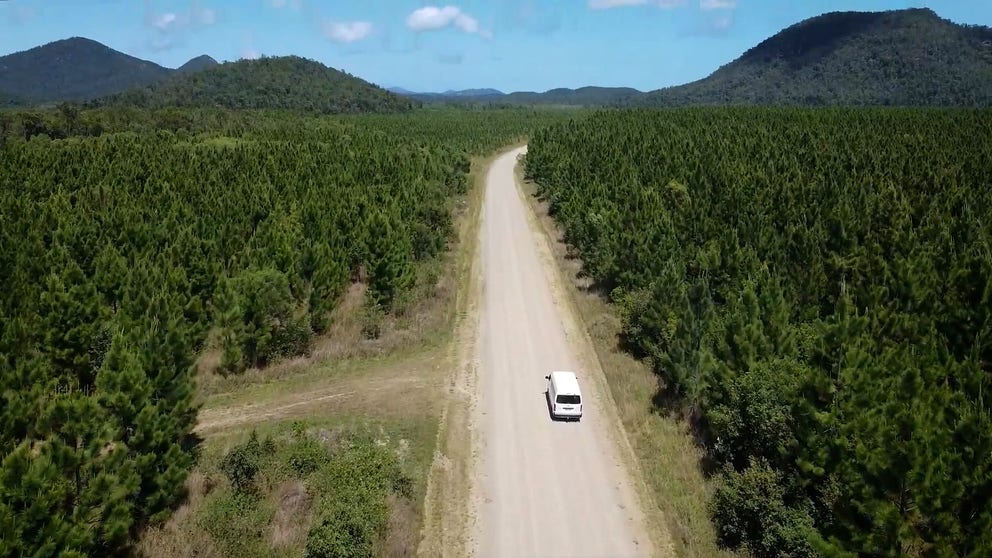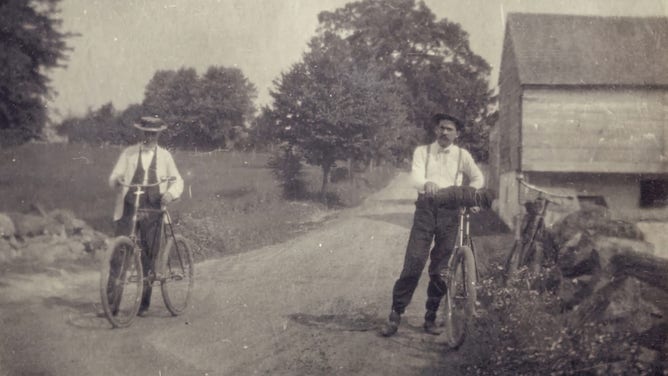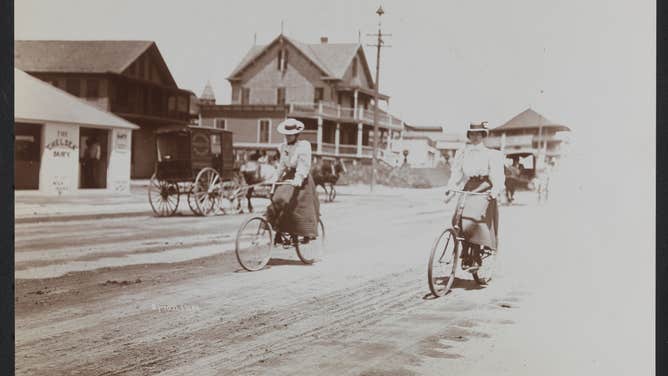‘A romantic opportunity’: How backroads made their way back into our hearts
The oft-forgotten scenic routes were once front-and-center for travelers
Why driving America's backroads makes for the best road trips
Unlike larger interstate highways, America's system of backroads gives drivers the opportunity to harmonize with nature and see the country at its best.
While they are often forgotten in a world dominated by speed and straight lines, backroads provide a slower, boutique view of the country it helped shape.
Two lanes, endless possibilities
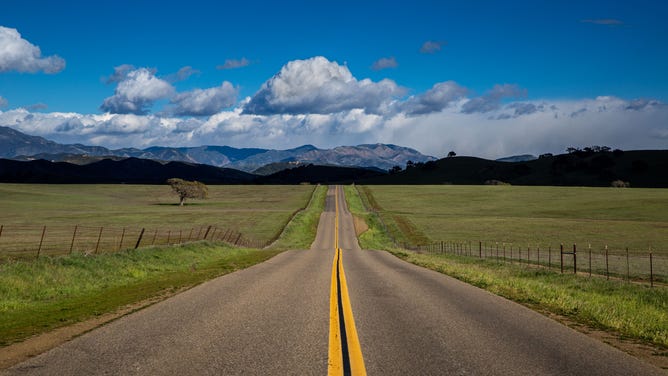
A two-lane road in Santa Barbara, California.
(George Rose / Getty Images)
"Backroads today are really a romantic opportunity," said Peter Liebhold, a curator emeritus at the Smithsonian's National Museum of American History.
"A lot of people choose to take the backroad, that the backroad opens them up to fantastic things that they didn't know about," he added. "It's just the experience itself of traveling that road that becomes so wonderful."
Backroads — rural roads, rustic roads and the off-beaten like — have evolved over time.
What are now seen as sleepy byways for locals or scenic routes for adventurous travelers were once the primary pathways aiding the flow of people, commerce and ideas.
The first roads
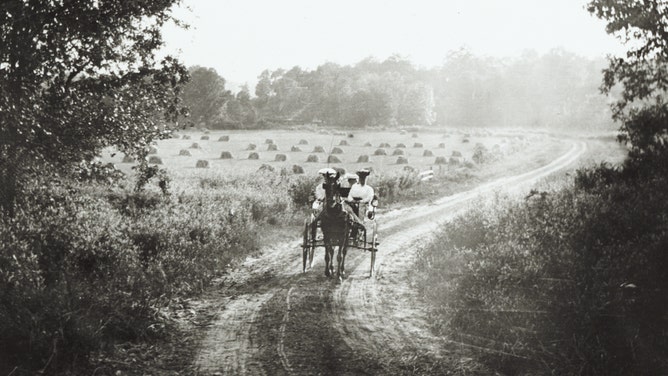
Women riding a horse and buggy down a country road in Wisconsin in 1906.
(Joseph Smith / Wisconsin Historical Society / Getty Images)
"The nature of roads is actually surprisingly complex, that in the beginning of the country, a road system really was not very extensive," Liebhold said.
While the National Road, the country’s first federally-funded road, was built between 1811 and 1834 to connect east coast cities with western frontier settlements, most roadways at the time were still fairly local.
According to Liebhold, the limited roadways caused travel at the time to be slow and difficult, leading most commercial transportation to be done by way of rivers and the ocean.
Another factor travelers had to consider was what the roads were made of. The first roads were made of dirt, and were dusty and dry. When the rain came, the roads turned to mud and became virtually impassable.
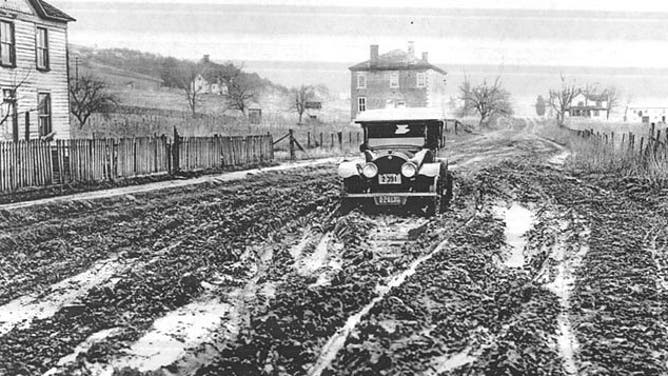
A car struggles to make it through the muddy road between Washington, D.C. and Richmond, VA in 1919.
(National Museum of American History, Smithsonian Institution)
"The big change started really around 1880/1890, when there was a Good Roads Movement, when people really want better roads," Liebhold said.
The biggest push for the Good Roads Movement came from a rather unlikely group.
"It isn't really hauling freight as much as bicycles that turn out to be a big factor," Liebhold said. "Bicycles have become a fad and that everyday folk were buying them and they wanted a place to ride."
While bicycles initiated some of the earliest road improvements, a new king of the road supercharged them.
"As automobiles move from something that the elite might own — just rich people would be able to own automobiles around 1900, by 1920 — lots of Americans, everyday folk, are buying cars and driving places just for fun," Liebhold said. "That democratization of transportation really fuels the interest in using roads."
SEE HOW AN ALABAMA WOMAN INVENTED WINDSHIELD WIPERS
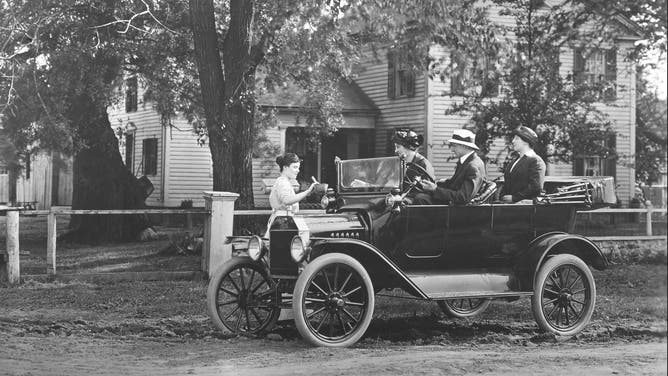
A Ford Model T parked next to a home in 1908.
(Mondadori Portfolio \ Mondadori)
Greater access to automobiles also led to the paving of many old roads.
"Pavement matters," Liebhold said. "When you're traveling on a dirt road or a gravel road, you really can't go very fast. But as you start to have motor vehicles in the early 1900s, your capability of faster travel increases, and as the pavement gets better, you can go faster and faster."
As the trend toward faster travel continued, backroads began to experience some competition.
Technological marvels
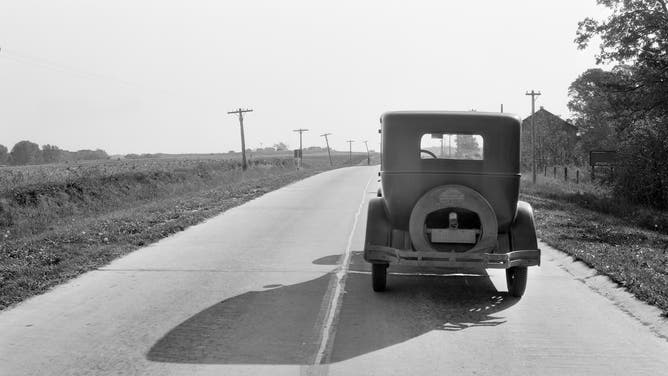
A car on a paved Highway 51 in Madison, Wisconsin in 1931.
(Angus B. McVicar / Wisconsin Historical Society / Getty Images)
Highways really start to be built in the 1920s and 1930s, according to Liebhold.
"The highway system really starts to create high-speed thoroughfares that are going longer distance, where you can go between cities, you can go between states or even coasts," he said.
Perhaps the most well-known of these roads is U.S. Highway 66, or Route 66.
Nicknamed "the Mother Road", it ran between Los Angeles and Chicago and was considered a technological marvel of its time. The high-speed access it provided to half of the country began to change the economy and nature of business, similar to the impact made by the transcontinental railroad.
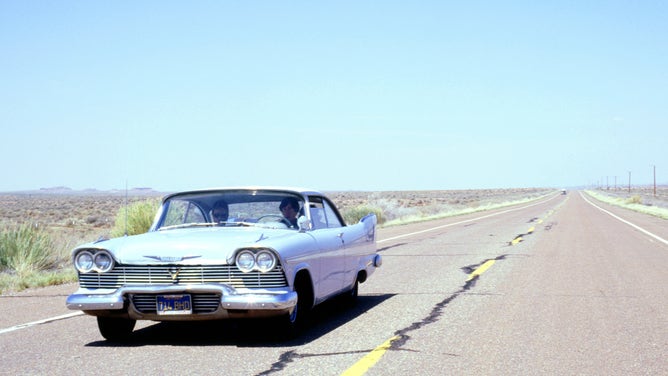
4 T
(National Motor Museum / Heritage Images / Getty Images)
The need for speed and access accelerated in the decades that followed.
In 1956, President Dwight D. Eisenhower signs into law the Interstate Highways Act.
"He, in his military service, saw the importance of good transportation arteries, both for business and for military reasons, and really helped promote the rise of the interstate highway system," Liebhold said.
The interstate highways connected people, cities and states like never before, causing a ripple effect on the nation as a whole — but also, on the slower, rural roads and small towns that preceded many of them.
LEARN MORE ABOUT HOW THE INTERSTATE HIGHWAYS TRANSFORMED AMERICA
Impact on towns
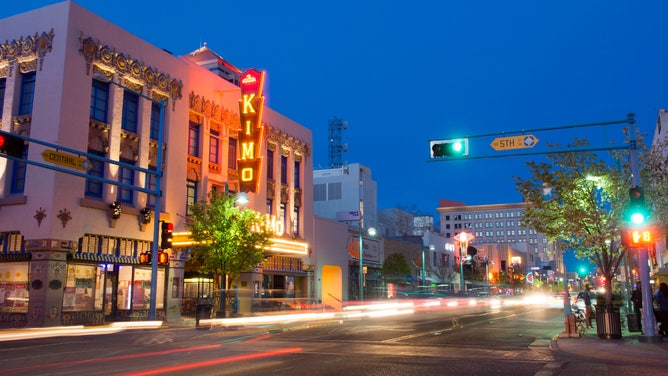
A portion of Route 66 in Albuquerque, New Mexico. Called Central Avenue, this street continues to thrive today.
(Education Images / Universal Images Group / Getty Images)
"Developing roads — highways, trade routes, big roads — where they actually go has a tremendous impact," Liebhold said. "So that as you build as you build a road, if the road goes through your town, the town has filling stations, it has motels, it has restaurants. Businesses develop around it, and things really take off."
On the flip side, as the technology of roads changed and larger roads attracted more and more drivers, the smaller roads that had once been the main arteries to and through towns began to see fewer drivers, and the towns that had sprung up around these now-backroads begin to dry up.
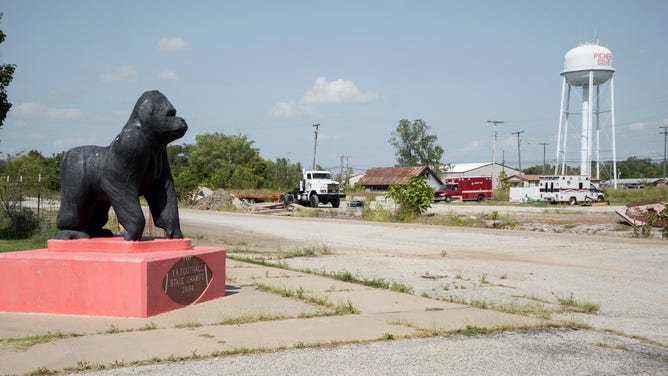
A ghost town in Oklahoma, off of Route 66.
(Dukas / Universal Images Group / Getty Images)
"When the link leaves, when the highway goes someplace else, quite often a lot of the business goes with it," Leibhold said.
Even some of the biggest games in town weren’t immune to the changing times of bigger and faster roadways.
According to Liebhold, Route 66, which stitched together about 2,400 miles of local, state and national highways, was suddenly no longer in use and turned into a small road.
Backroad revival
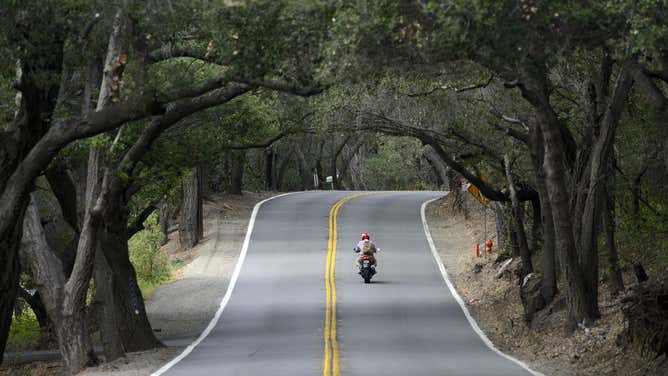
A motorcyclist rides down county highway S19 in California.
(Jeff Gritchen / Digital First Media / Orange County Register / Getty Images)
As interstate highways remain the main arteries throughout the nation, backroads and other small roads have experienced a bit of a rebranding by embracing their slower, easy-going roots.
"The notion of (the) road as serendipity or the road opening up things that you didn't expect is deeply seeded in people today," Liebhold said.
He added that, unlike larger highways, backroads tend to be more harmonizing with nature, winding around a river or up a hill, allowing drivers to see history and nature at its best.
"Instead of being all about speed and getting to the next destination, take just a little bit more time and discover an old mill or see a fantastic steel bridge, or just see some wonderful rock outcroppings, or maybe find that old, old diner restaurant — there's just no end of great opportunities when you drive along a backroad."
